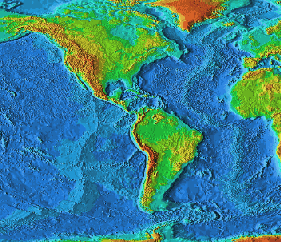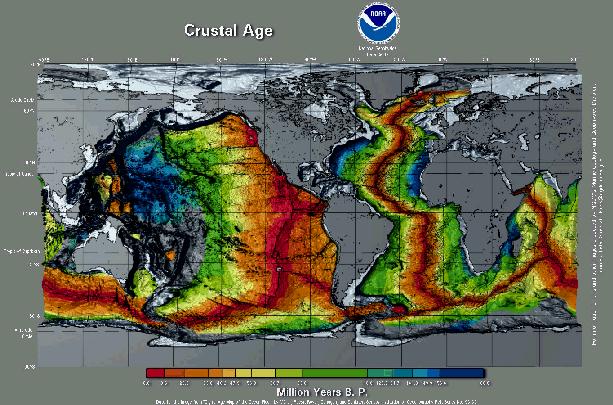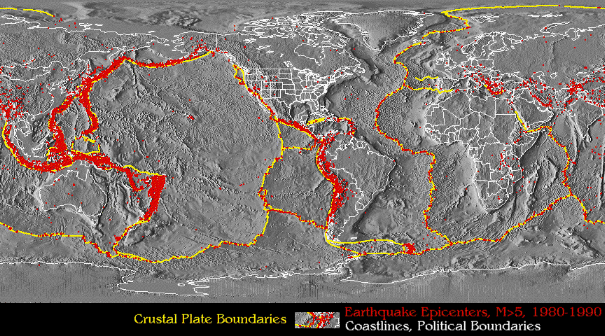Evidence for
Plate Tectonics
The original conjectures concerning plate tectonics were based on
circumstantial evidence like the shapes of continents being such that they
would fit well if pushed together. Today, we have a much broader set of
evidence in favor of the hypothesis.
Indications of Tectonic Activity
Among the classes of evidence for continental drift and the underlying plate
tectonics we may list

- The shapes of many continents are such that they look like they are
separated pieces
of a jig-saw puzzle. For example, look in the adjacent
map
at the shape of the east coast of North
and South Americal relative to the shape of the west coast of Africa and
Europe.
- Many fossil comparisons along the edges of continents that look like they
fit together suggest species similarities that would only make sense if the two
continents were joined at some point in the past.
- There is a large amount of seismic, volcanic, and geothermal activity along
the conjectured plate boundaries. This is shown clearly below in the figure
labeled "Crustal plate boundaries" where the epicenters of earthquakes above
Richter magnitude 5.0 are plotted for a 10-year period.
The concentration is
striking, and indeed this plot serves to define the plate
boundaries extremely well. Here is a
clickable map of current volcanic activity on
Earth.
-
There are ridges, such as the Mid-Atlantic Ridge (see figures above and
below) where
plates are separating that are produced by lava welling up from between the
plates as they pull apart. Likewise, there are mountain ranges being formed
where plates are pushing against each other (e.g., the Himalayas, which are
still growing).
Plate tectonic motion, which may be only centimeters per century, is now being
studied by careful laser ranging techniques that are capable of detecting such
small motions.
Age of the Sea Floor
If the crustal plates are pulling apart at boundaries like the Mid-Atlantic
Ridge (see the line of earthquake epicenters down the center of the Atlantic in
the preceding figure), the sea floor near these ridges should be very young
geologically, since it is formed of material upwelling from the interior. This
is indeed the case, as the following figure shows.
 |
|
Age of the sea floor crustal plates
|
This figure displays the estimated
age of sea floor crustal plates
with red the youngest and blue the oldest.
Click
(here)
to a different map with more legible writing and more info.
One can see clearly that material near the crustal
boundaries is very young geologically.


